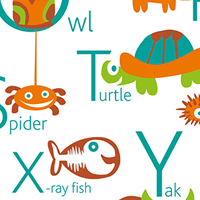Bài tập tiếng Anh 12 Unit 3: Ways of Socialising hệ 7 năm
Trắc nghiệm Unit 3 lớp 12 Ways of socialising có đáp án
Bài tập tiếng Anh lớp 12 Unit 3 Ways of socialising có đáp án cung cấp thêm cho các em các bài tập để rèn luyện nâng cao kỹ năng cũng như giúp các em sắp thi học sinh giỏi các bài tập tham khảo để luyện tập. Bài tập được chia thành các mục với các kỹ năng khác nhau giúp các em có thể dễ dàng lựa chọn kỹ năng mình cần tập trung luyện tập. Tất cả các bài tập đều có đáp án.
* Xem thêm Hướng dẫn học Unit 3 tiếng Anh lớp 12 tại:
Soạn Unit 3 lớp 12 Ways of socialising hệ 7 năm
I. Bài tập tiếng Anh 12 unit 3 Ways of socialising
Choose the word which is stressed differently from the rest.
1. a. attract b. person c. signal d. instance
2. a. verbal b. suppose c. even d. either
3. a. example b. consider c. several d. attention
4. a. situation b. appropriate c. informality d. entertainment
5. a. across b. simply c. common d. brother
Choose a, b, c, or d that best completes each unfinished sentence, substitutes the underlined part, or has a close meaning to the original one.
6. She is a kind of woman who does not care much of work but generally _______ only with colleagues for meals, movies or late nights at a club.
a. supposes
b. socializes
c. attention
d. discussed
7. I didn't think his comments were very appropriate at the time.
a. correct
b. right
c. exact
d. suitable
8. You should _______ more attention to what your teacher explains.
a. make
b. get
c. set
d. pay
9. Body language is a potent form of _______ communication.
a. verbal
b. non-verbal
c. tongue
d. oral
10. Our teacher often said, "Who knows the answer? _______ your hand."
a. Rise
b. Lift
c. Raise
d. Heighten
11. This is the instance where big, obvious non-verbal signals are appropriate.
a. situation.
b. attention
c. place
d. matter
12. They started, as _______ gatherings but they have become increasingly formalized in the last few years.
a. informal
b. informally
c. informalize
d. informality
13. Children who are isolated and lonely seem to have poor language and ________.
a. communicate
b. communication
c. communicative
d. communicator
14. The lecturer explained the problem very clearly and is always _______ in response to questions.
a. attention
b. attentive
c. attentively
d. attentiveness
15. Pay more attention _______ picture and you can find out who is the robber.
a. to
b. for
c. at
d. on
16. She looked _______ me, smiling happily and confidently.
a. on
b. over
c. forward
d. at
17. - What an attractive hair style you have got, Mary!
- _______
a. Thank you very much. I am afraid
b. You are telling a lie
c. Thank you for your compliment
d. I don't like your sayings
18. In _______ most social situations, _______ informality is appreciated.
a. Ø/ Ø
b. the/ an
c. a/ the
d. the/ a
19. - What beautiful dress you are wearing!
- Thank you. That is _______ nice compliment.
a. a/ a
b. the/ Ø
c. Ø/ Ø
d. the/ the
20. ______ you wanted to ask your teacher a question during his lecture, what would you do?
a. As
b. As if
c. Even of
d. suppose
21. John asked me _______ in English.
a. what does this word mean
b. what that word means
c. what did this word mean
d. what that word meant
22. The mother told her son _______ so impolitely.
a. not behave
b. not to behave
c. not behaving
d. did not behave
23. She said she _______ collect it for me after work.
a. would
b. did
c. must
d. had
24. She said I _______ an angel.
a. am
b. was
c. were
d. have been
25. I have ever told you he _______ unreliable.
a. is
b. were
c. had been
d. would be
26. I told him _______ the word to Jane somehow that I _______ to reach her during the early hours.
a. passing/ will try
b. he will pass/ tried
c. to pass/ would be trying
d. he passed/ have tried
27. Laura said she had worked on the assignment since _______.
a. yesterday
b. two days ago
c. the day before
d. the next day
28. John asked me _______ interested in any kind of sports.
a. if I were
b. if were I
c. if was I
d. if I was
29. I _______ you everything I am doing, 'and you have to do the same.
a. will tell
b. would tell
c. told
d. was telling
30. John asked me _______ that film the night before.
a. that I saw
b. had I seen
c. if I had seen
d. if had I seen
Error Identification.
31. According to (A) Mehrabian in1971, only 7% (B) of the information we communicate to others (C) depends upon the words saying (D); 93% of that depends on nonverbal communication.
32. Body language (A) is quiet and secret (B), but most (C) powerful language of all (D).
33. Our bodies send out (A) messages (B) constantly and sometimes we do not recognize (C) that we are using many (D) nonverbal language.
34. Our understanding (A) and use of non-verbal cues in facial expressions (B) and gestures are familiar (C) to us nearly in (D) birth.
35. A person's (A) body postures, movements but (B) positions more often tell us exactly (C) what (D) they mean.
Read the passage carefully and choose the correct answer.
Communication in general is process of sending and receiving messages that enables humans to share knowledge, attitudes, and skills. Although we usually identify communication with speech, communication is composed of two dimensions - verbal and nonverbal.
Nonverbal communication has been defined as communication without words. It includes apparent behaviors such as facial expressions, eyes, touching, tone of voice, as well as less obvious messages such as dress, posture and spatial distance between two or more people.
Activity or inactivity, words or silence all have message value: they influence others and these others, in turn, respond to these communications and thus they are communicating.
Commonly, nonverbal communication is learned shortly after birth and practiced and refined throughout a person's lifetime. Children first learn nonverbal expressions by watching and imitating, much as they learn verbal skills.
Young children know far more than they can verbalize and are generally more adept at reading nonverbal cues than adults are because of their limited verbal skills and their recent reliance on the nonverbal to communicate. As children develop verbal skills, nonverbal channels of communication do' not cease to exist although become entwined in the total communication process.
36. According to the writer, ________.
a. Nonverbal language is only used by the deaf and the mute.
b. One cannot communicate in both verbal and . nonverbal language.
c. Those who can listen and talk should not use nonverbal language.
d. People communicate with both verbal and nonverbal language.
37. Which is not included in nonverbal communication?
a. words
b. spatial distance
c. facial expressions
d. tone of voice
38. We can learn from the text that ________.
a. nonverbal can never get any responses
b. most people do not like nonverbal communication
c. even silence has message value
d. touching is not accepted in communicating
39. Human beings ________.
a. have learnt how to communicate in nonverbal language through books
b. can communicate in nonverbal language only when they are mature
c. have learnt how to communicate in nonverbal language since a child
d. communicate in nonverbal language much less than they do in verbal language
40. The word reading has a close meaning to ________.
a. looking at the words that are written b. understanding
c. saying something aloud d. expressing
Fill in each numbered blank with one suitable word or phrase.
Researchers in communication show that more feelings and intentions are (41) _______ and received nonverbally than verbally. Mehrabian and Wiener following have stated that only 7% (42) _______ message is sent through words, with remaining 93% sent nonverbal (43) _______.
Humans use nonverbal communication because:
1. Words have limitations: There are (44) _______ areas where nonverbal communication is more (45) _______ than verbal, especially when we explain the shape, directions, personalities which are expressed nonverbally.
2. Nonverbal signal are powerful: Nonverbal cues primarily express inner (46) _______ while verbal messages deal basically with outside world.
3. Nonverbal message are likely (47) _______ more genuine: because nonverbal behaviors cannot be controlled as easily as spoken words.
4. Nonverbal signals can express feelings inappropriate to state: Social etiquette limits (48) _______ can be said, but nonverbal cues can communicate thoughts.
5. A separate communication channel is necessary to (49) _______ send complex messages: A speaker can add enormously to the complexity of the verbal message through simple nonverbal (50) _______
41. a. sent b. posted c. mailed d. thrown
42. a. through b. in c. of d. for
43. a. thought b. expressions c. gestures d. postures
44. a. sum b. great deal c. amount d. numerous
45. a. effect b. effective c. effectively d. effectiveness
46. a. feelings b. words c. shows d. sorrows
47. a. be b. being c. to be d. been
48. a. what b. that c. why d. when
49. a. get b. have c. make d. help
50. a. signs b. signals c. sight d. signatures
Read the following passage and mark the letter A, B, C, or D on your answer sheet to indicate the correct word or phrase that best fits each of the numbered blanks from 51 to 55.
SOCIAL NETWORK
A 16-year-old girl from Essex has been sacked after describing her job as boring on the social networking website, Facebook. The teenager, who had been working (51) _______ an administrative assistant at a marketing company for just three weeks, didn't feel very enthusiastic about the duties she was asked to do. (52) _______ of moaning to her friends she decided to express her thoughts on her Facebook page to a colleague, who (53) _______ the boss's attention to it. He immediately fired her on the (54) _______ that her public display of dissatisfaction made it impossible for her to continue working for the company. She later told newspapers she had been treated totally unfairly, especially as she hadn't even mentioned the company's name. She claimed she's been perfectly happy with her job and that her light-hearted comments shouldn't (55) _______ taken seriously. A spokesperson from a workers' union said the incident demonstrated two things: firstly, that people need to protect their privacy online and secondly, that employers should be less sensitive to criticism.
51. A. For B. as C. like D. At
52. A. Due B. Regardless C. Instead D. In spite
53. A. Got B. caught C. paid D. Drew
54 A. Terms B. condition C. grounds D. Basis
55 A. to be B. have been C. be D. Have
II. Đáp án bài tập unit 3 tiếng Anh 12 Ways of socialising
Choose the word which is stressed differently from the rest.
1 - a; 2 - b; 3 - c; 4 - b; 5 - a;
Choose a, b, c, or d that best completes each unfinished sentence, substitutes the underlined part, or has a close meaning to the original one.
6 - b; 7 - d; 8 - d; 9 - b; 10 - c;
11 - a; 12 - a; 13 - b; 14 - b; 15 - a;
16 - d; 17 - c; 18 - a; 19 - a; 20 - d;
21 - d; 22 - b; 23 - a; 24 - b; 25 - a;
26 - c; 27 - c; 28 - d; 29 - a; 30 - c;
Error Identification.
31 - D (we say); 32 - C (the most); 33 - D (a lot of); 34 - D (from); 35 - B (and);
Read the passage carefully and choose the correct answer.
36 - d; 37 - a; 38 - c; 39 - c; 40 - b;
Fill in each numbered blank with one suitable word or phrase.
41 - a; 42 - c; 43 - b; 44 - d; 45 - b;
46 - a; 47 - c; 48 - a; 49 - d; 50 - b;
Read the following passage and mark the letter A, B, C, or D on your answer sheet to indicate the correct word or phrase that best fits each of the numbered blanks from 51 to 55.
51 - B; 52 - C; 53 - D; 54 - C; 55 - B;
Trên đây là Trắc nghiệm tiếng Anh lớp 12 Unit 3 Ways of socialising có đáp án. Mời bạn đọc tham khảo thêm nhiều tài liệu ôn tập Tiếng Anh 12 khác như: Để học tốt Tiếng Anh lớp 12, Bài tập Tiếng Anh lớp 12 theo từng Unit trực tuyến, Đề thi học kì 1 lớp 12, Đề thi học kì 2 lớp 12,... được cập nhật liên tục trên VnDoc.com.
Mời quý thầy cô, các bậc phụ huynh tham gia nhóm Facebook: Tài liệu ôn tập lớp 12 để tham khảo chi tiết các tài liệu học tập lớp 12 các môn năm 2020 - 2021.
















